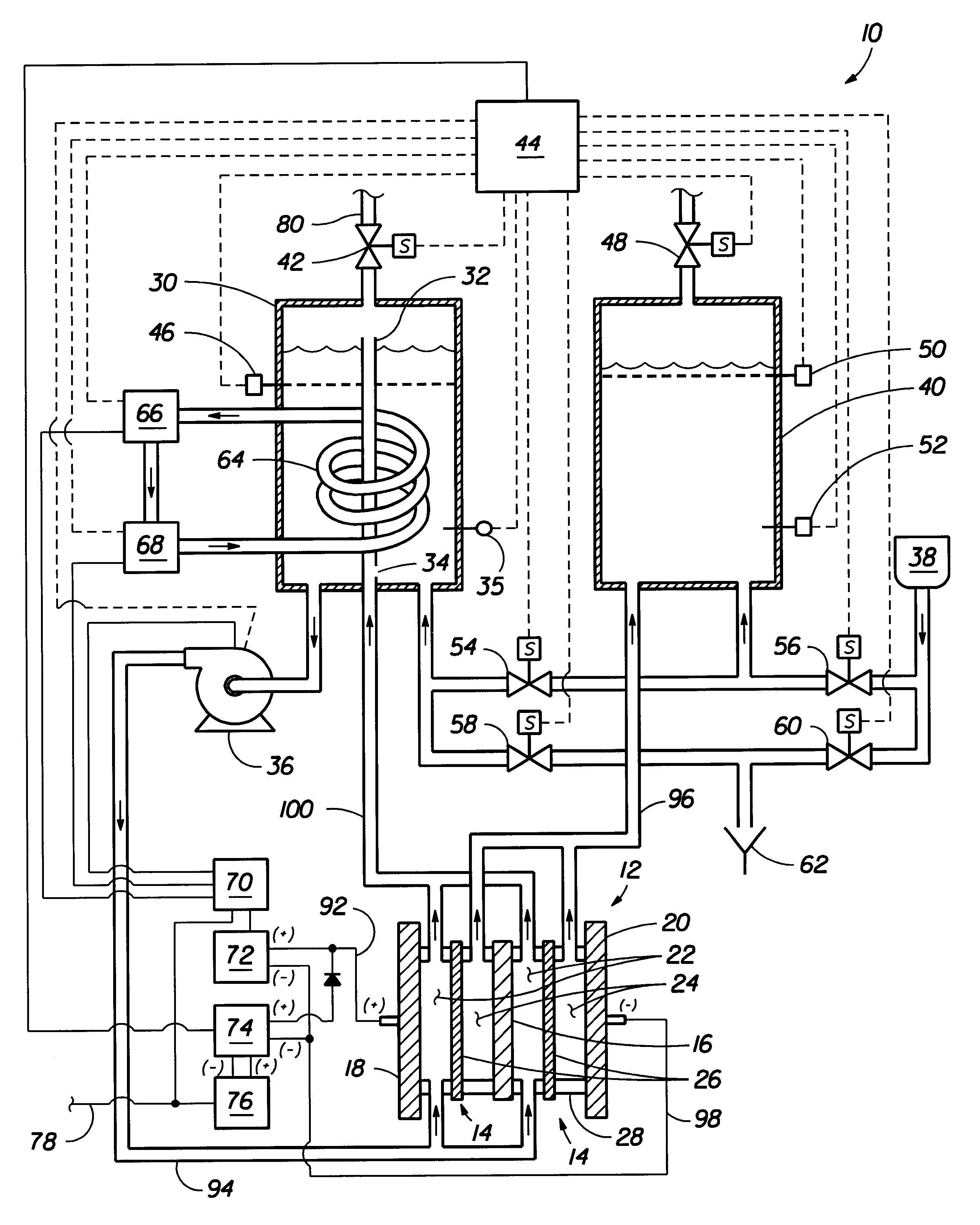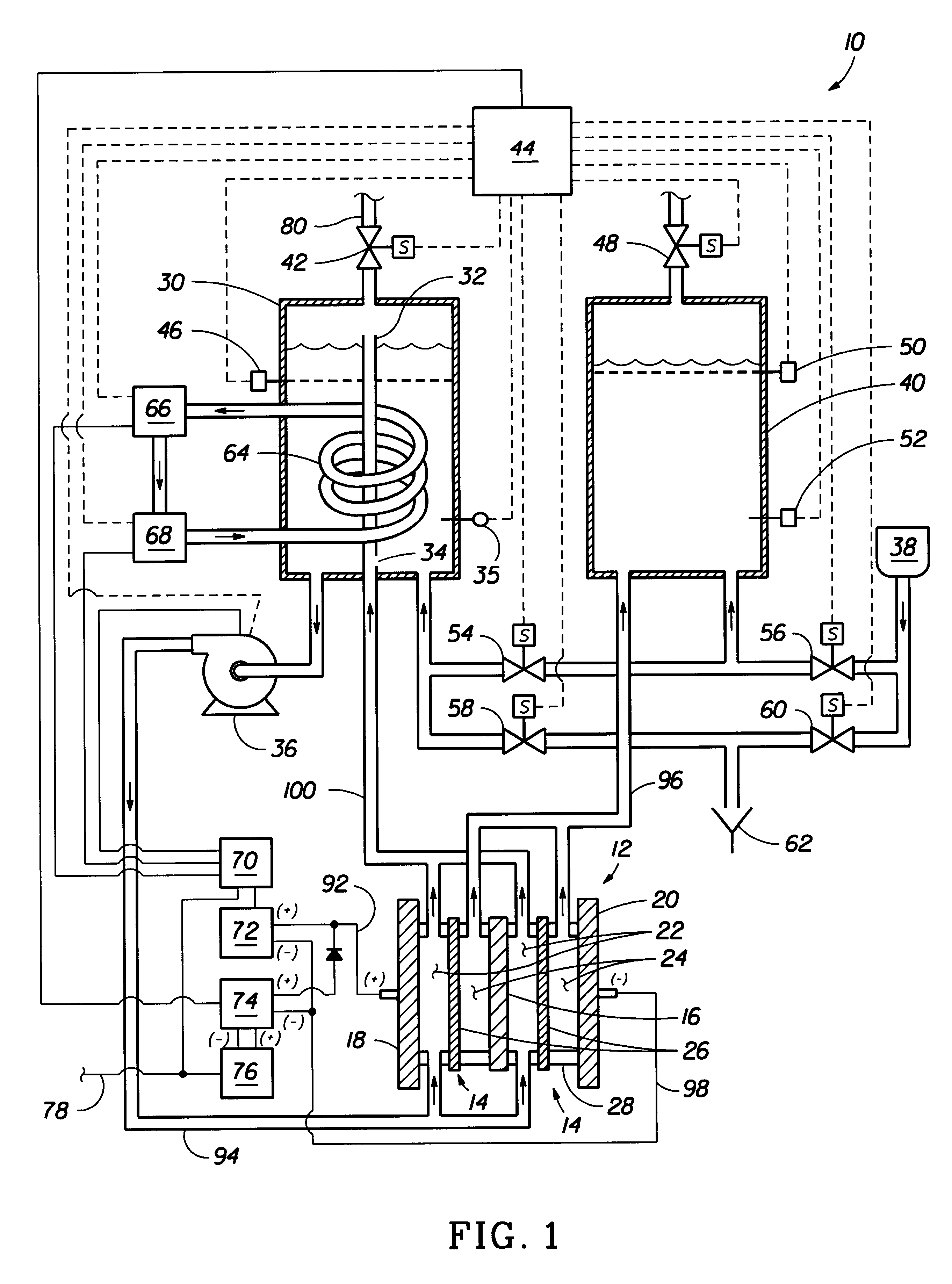Electrolyzer
a technology of electrolysis and electrolysis components, which is applied in the direction of electrolysis components, specific water treatment objectives, water/sewage treatment by oxidation, etc., can solve the problems of poor energy efficiency of production, high cost of generating equipment, and potential danger of transportation
- Summary
- Abstract
- Description
- Claims
- Application Information
AI Technical Summary
Problems solved by technology
Method used
Image
Examples
Embodiment Construction
An ozone generator was designed in accordance with FIGS. 1, 3 and 4 to produce about 5 pounds per day of ozone from about 5 gallons per day of deionized water. A stack of 10 electrolytic cells were used to generate a continuous output of about 7 liters / minute of a wet oxygen stream having about 15 wt % of ozone. Each cell had an active area of about 100 square centimeters. The anode flowfield was provided by three rolled, expanded sheets of titanium and a layer of sintered titanium in electrical contact with the expanded titanium. The sintered titanium layer had a thin layer of a lead dioxide catalyst deposited onto its surface and the lead dioxide was placed in face-to-face contact with a proton exchange membrane (PEM). The PEM was a sheet of perfluorinated sulfonic acid polymer, NAFION 117. The cathodic electrocatalyst was provided by a carbon fiber paper impregnated with a platinum catalyst. The fiber paper was placed against the second side of the PEM. The cathode flowfield was ...
PUM
| Property | Measurement | Unit |
|---|---|---|
| current efficiency | aaaaa | aaaaa |
| temperatures | aaaaa | aaaaa |
| pressure | aaaaa | aaaaa |
Abstract
Description
Claims
Application Information
 Login to View More
Login to View More - R&D
- Intellectual Property
- Life Sciences
- Materials
- Tech Scout
- Unparalleled Data Quality
- Higher Quality Content
- 60% Fewer Hallucinations
Browse by: Latest US Patents, China's latest patents, Technical Efficacy Thesaurus, Application Domain, Technology Topic, Popular Technical Reports.
© 2025 PatSnap. All rights reserved.Legal|Privacy policy|Modern Slavery Act Transparency Statement|Sitemap|About US| Contact US: help@patsnap.com



